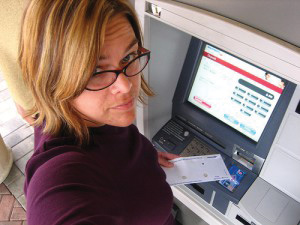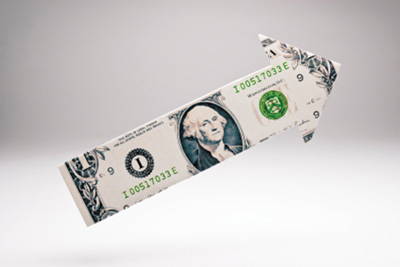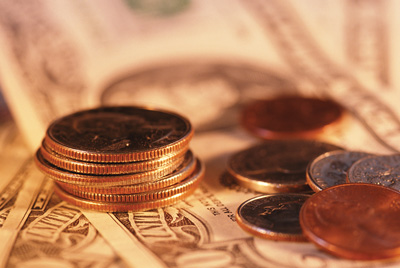
HOW TO AVOID YOUR SAVINGS ACCOUNT’S MINIMUM BALANCE REQUIREMENT
by Casey Bond
About 70 percent of Americans have a savings account used to securely store extra cash in the hopes of earning a little extra interest on the principal. There are hundreds of savings account options from bank branches, online financial institutions and credit unions, all with different features and requirements.
Even though savings accounts can somewhat limit the ability of depositors to add and withdraw money as compared with transactional checking accounts, savings accounts provide benefits that other deposit accounts can’t — namely, the ability to earn more interest. However, many financial institutions place a minimum balance requirement on savings accounts in order to earn the specified interest rate which is not always worth it to depositors with smaller savings. |
 |
Q&A: WHY DO BANKS REQUIRE A MINIMUM BALANCE?
Q: I see that most bank accounts will charge a monthly maintenance fee unless I maintain a minimum balance, but I don’t always have a lot of money on hand and some of these minimums are pretty high. Why do banks require a minimum balance, and is it possible to open an account without one?
A: It’s very common for banks and credit unions to require a minimum balance to open an account, earn a higher interest rate, avoid fees or any combination of these things.
The reason is because you cost the bank money. They must pay overhead to keep branches running, personnel to maintain your account and provide customer service, etc. So, to make you worthwhile as a customer, they need to be able to make more money from your deposits than you will cost them to maintain your accounts.
That’s where the minimum balance comes in. Banks and credit unions use your deposits to lend out to other customers charging interest on those loans and earning a profit. Of course, there’s not much they can do with a savings account that has a balance of $3 so they might require at least $25 or $50, maybe more. This ensures there will be enough money on deposit at all times to generate interest revenue for the institution.
That said, not all financial institutions require minimum balances. Online banks, for example, have almost no overhead since they don’t operate physical branches, and can therefore reduce or eliminate minimum balance requirements. Credit unions also tend to have very low or no minimum deposit requirements because they’re less revenue driven than for profit banks.
But, even if your bank does require a minimum balance, it’s usually not very hard to have it waived.

Photo: Betsssssy
BANKS WITH SAVINGS ACCOUNT MINIMUM DEPOSIT REQUIREMENTS
It is up to the discretion of a bank whether or not they require a minimum balance for a savings account. However, by meeting a minimum, you are usually entitled to perks like waived fees or no caps on withdrawals per month. These perks are sometimes based on a tiered system so the more you save, the greater the benefits and savings interest rates offered to you.
On the other hand, failing to meet a minimum balance once an account is opened means, at the very least, that you will be unable to earn the institution’s best interest rate offered, and at the worst, you’ll be charged fees until the balance is brought back up to the minimum. Because interest rates are so low today, incurring just one savings account fee results in losing all the interest earned, and maybe even losing money on your principal deposit.
Q&A: HOW DO I AVOID MY BANK’S SAVINGS ACCOUNT FEE?
Q: I’ve been working at my job for a few months and I want to open a savings account to start saving part of my paychecks, but every bank I look at charges a monthly fee. Is there any way to get this fee waived?
A: Checking account fees may be at the forefront of people’s attention, but it’s savings account fees that can really hurt your bottom line. In fact, paying just one savings account fee can cause your savings account to lose money. Luckily, though, there are a number of ways to avoid charges to your savings account which often come in the form of a monthly maintenance fee.

How to Get Your Savings Account Monthly Maintenance Fee Waived
- Maintain a minimum balance: Most banks only charge a maintenance fee if the balance of the savings account falls below a minimum balance. Some accounts may require a low minimum balance of just $5, while others can be as high as $500. If you’re concerned about fees, look for a savings account with a low minimum balance requirement or no minimum balance at all.
- Link your checking and savings. Rather than a minimum balance, a bank or credit union may require a minimum number of transactions in the account to avoid a monthly fee. Linking a checking account to your savings account allows you to set up automatic transfers so you never forget to make the needed number of deposits to your savings.
Additionally, financial institutions sometimes waive savings account fees just for having both a checking and savings account with the same bank. Consider opening a checking and savings account at the same time if this will allow you to avoid a monthly maintenance fee.
- Limit withdrawals: In addition to maintenance fees, it’s common for banks to charge a fee to your savings account if you make excessive withdrawals within the month or quarter. Only deposit money you plan to keep on deposit for a long period of time so you don’t end up making too many withdrawals.
Savings account fees vary by institution, but it’s usually easy to have them waived by meeting one or two simple requirements. If you have trouble finding a completely free savings account look for banks and credit unions with savings account terms that are easy for you to adhere to and avoid paying a fee.
HOW TO GET A FREE SAVINGS ACCOUNT WITH NO MINIMUM BALANCE
Some banks choose to waive the minimum completely when special conditions are met.
Bundle services: Many banks operate on the system of providing free savings accounts with no minimum balance to be used in conjunction with your regular checking account.The same is true if you hold a loan with a particular institution.
Look to the Web: Not all banks and credit unions require minimum balances, however, it’s just a matter of finding them. Many online banks, especially, require a minimum of only $1 to open a savings account. Once the account is opened there is no imposed minimum balance or monthly fees.
One consideration to keep in mind, however, is that while these online savings accounts are extremely simple and hassle free, the transfers between your local bank branch to your online account and back may take a couple of days to post. Customers should be aware of the time delay if they need to access their money immediately.
Before opening a bank account, be sure you’re aware of all the terms and conditions to enjoy the interest rate advertised. Minimum balance requirements are easy to overlook, especially when a higher interest rate is offered. Taking the time to research your options, however, will allow you to find a high yield savings account that doesn’t require you to maintain a high balance at all times.

HERE’S THE FIRST THING YOU SHOULD DO WITH EVERY PAYCHECK
by Paul Sisolak

Photo: scottjwaldron
Whether your expenses are piling up or you simply lack the financial discipline to sock away a few extra bucks every month, there are myriad reasons why it’s difficult to amount a sizable savings account.
Here’s the problem: Once you get paid, your money has to go several places at once. Bills need to be paid, credit card balances need to be settled, groceries need to be bought, perhaps even some nonessentials too. In all the shuffle, the money that you should be saving becomes your discretionary income, and what should be your disposable money you dispose of. Zero savings there.
You’re not going to break this cycle until you start treating your own savings account like a bill that needs to be paid monthly along with your rent, car payment and utilities. You need to learn to pay yourself first. This means that each time you get your paycheck, the first thing you do is set aside a portion of your earnings to save before taking care of your bills and other necessities. It guarantees that you’re actually saving the money you should be saving.
But a “savings first” plan requires you to budget your money. Read on to find out how.
Saving, Bills, Fun: In that Order
As personal finance blogger J.D. Roth noted on his site Get Rich Slowly, “Most people spend their money in the following order: bills, fun, saving.” Developing the best pay yourself first plan should allow you to save some money and still afford your bills and responsibilities. Neither obligation should suffer. So how much should you save?
In an interview with CBS News, financial expert David Bach said that people should save one hour’s worth of income every day.That’s 12.5 percent of your gross pay. Most people save only 4 percent of their income, just about 20 minutes of work. The trick is to start slow.
Here’s How to Start Saving Your Income
- Calculate how much you can actually afford not how much someone else tells you you can spare. Devise a simple budget. Set aside the same amount of money you would for monthly expenses. If they’re fixed, like a mortgage, those bills aren’t going anywhere. Then, figure how much you can save by cutting back. “You may find that even small changes in spending habits, such as bringing your lunch to work or making less frequent trips to the salon, could create big
savings over time,” according to Wells Fargo‘s website.
- Take baby steps that would make Dave Ramsey proud. Paying yourself first is about setting a goal and working to increase it, a lot like attaining a fitness goal. Start with lighter weights and increase the resistance. “Some will argue that saving [1%] is meaningless,” Roth said. “But if a skeptic will try to save just 1% of his income he’ll usually discover the process is painless. Maybe next he’ll try to save 3%. Or 5%. As his saving rate increases so to his nest egg will grow.
- Strategize. Once you get into the rhythm of saving you’ll know how much to put away, and where to divert it, like a Roth IRA, high yield checking account or other investment account. Per Wells Fargo, “Split your direct deposit so that an amount or a percentage goes directly into your savings account before you can spend it. Or, set up an automatic transfer for each payday, regularly sending money from your checking account to your savings account. This can help you get used to managing living expenses with what looks like a smaller paycheck when actually you’re building up your own savings.”
Follow this plan and check back with yourself in two to three months. Suddenly, everything falls into place: You’re able to save a bit, stay on top of your bills and have some money left over, too.
Whats the Payoff?
So, apart from the physical cash which was there all along, where is paying yourself first actually taking you? Roth of Get Rich Slowly states three points:
- It develops good mental savings habits. “You’re telling yourself that you are more important than the electric company or the landlord. Building savings is a powerful motivator. It’s empowering,” he says.
- It creates good financial habits. Remember: savings, bills, fun. By learning to save first, says Roth, “you’re able to set the money aside before you rationalize reasons to spend it.”
- Saved money is practical money. That savings will come in handy someday because it builds a cash buffer for everything from emergencies, to retirement funding, to a house down payment. “Paying yourself first gives you freedom,” Roth notes. “It opens a world of opportunity.
Keep Your Promise
Investing author Joshua Kennon observes that most people are careful to keep their word to someone, but have no problems lying to themselves. Don’t let this happen with your new savings plan.
“As soon as you miss one ‘payment,’ odds are, you will miss another, then another, until you have stopped saving altogether,” Kennon wrote. “The secret to success in this game is not so much the amount of money you are investing, but the persistence with which you are doing it.”
Don’t just rearrange your income, either. Look for ways to save extra money any way you can. The Digerati Life, a personal finance and business blog, recommends doing
everything from requesting higher withholdings on your tax forms, to banking savings from coupons and discounts, to pretending you haven’t yet paid down your debt even if you already have. In the long run, it’ll make a financial difference.
It’s never the wrong time to begin saving. “No matter what your age, you should make it a priority to develop a regular saving plan,” Roth wrote. “Establishing this habit early can lead to increased financial security later in life.”.
By paying yourself first, the last thing you’ll have to worry about is having zero savings when you need money most.
© 2014 TLC Magazine Online, Inc. |